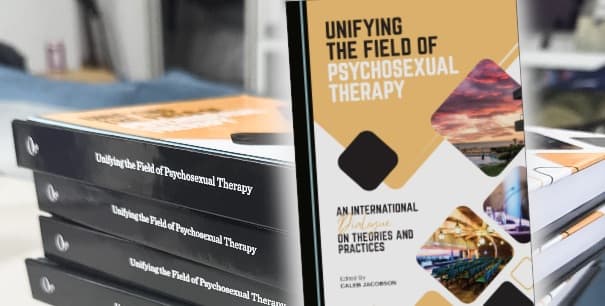The DSM-5 diagnostic criteria for ADHD is Flawed
The DSM-5 does not represent ADHD accurately because its criteria do not conceptualize ADHD as a disorder of executive functioning and self-regulation. This limitation greatly narrows the concept of ADHD, trivializes its nature as just an attention deficit problem, and discourages diagnosing clinicians from focusing on the wider range of impairments inherent in ADHD. These impairments impact executive inhibition, self-awareness, working memory, emotional self-regulation, self-motivation, planning/problem-solving, and other functions not typically associated with ADHD. Ignoring them restricts diagnosis and, ultimately, treatment for many patients.
#1. Change the name of the disorder.
Attention Deficit Hyperactivity Disorder. The name describes the stereotypical problems of little boys who cannot sit still and pay attention for more than a few minutes. It really doesn’t do justice to what everyone else experiences.
#2. Redefine the disorder as a syndrome that exists along a well-documented and peer-reviewed continuum of struggles.
When I read the DSM-5 diagnostic criteria for ADHD I feel teleported back to the Dark Ages. For a community that insists on clarity, granularity, and reproducible research findings, the ADHD diagnosis is none of that. ADHD is a well-researched syndrome of executive function and self-regulation disorders which the DSM-5 shoehorns and trivializes into inattention and hyperactivity/impulsivity. The current criterial ignore the peer-reviewed research on dopamine-seeking, executive inhibition, self-awareness, working memory, focus, emotional self-regulation, sleep, self-motivation, planning/problem-solving, just to name a few.
#3. Realize ADHD is not a deficiency of attention nor does it always involve hyperactivity.
Redefine ADHD from being a purely symptomatic definition to include neurochemical, physio-neurological, and brain activity differences. The ADHD brain differs from the “neurotypical” brain and it’s time we bring the documentable attributes of the syndrome into parity with the medical view of a broken arm: you can see it in a medical scan.
#4. Include a criteria of “Now vs Not Now”.
This is a big one that my son and wife struggle with. They will identify a task that needs to be accomplished. If they don’t do it “now”, they usually won’t get it done. Tell them to look at a list? That’s great when they can do things in the “now” when they look at the list. When they depend on the list to complete a task in the future— in the “not now”— it simply doesn’t get done because the future doesn’t actionably exist.
#5. Expand the diagnostic impact of additional pathways of impulsivity.
The ADHD brain craves dopamine like zombies crave brains. Dopamine seeking leads to impulsivity.
#6. Look at the impact of executive function deficits in daily life.
This is going to be a running topic that I break down into greater nit-pickiness. For example, I have no problem sitting still for hours on end and I always got my homework in on time. The back story is that I started homework projects the night before they were due and I cannot keep my mind from racing on a concurrent multitude of topics. I listen to audiobooks at double speed to keep my mind engaged.
#7. As a syndrome, utilize different scales for both sex and age.
It is well-understood that ADHD affects people of different ages in different ways. Unfortunately, the differences in ADHD presentation between biochemically males and females is night and day.
Considered as a syndrome, ADHD includes ongoing problems with inattention, restlessness, disorganization, planning, task completion, euphoric mood, racing thoughts, irritability, increased activity, impulsive behavior, impaired functioning, insomnia, and long hours at work with little accomplishment (Adler, 2004), executive functioning struggles (Boonstra), and other age-inappropriate behaviors combined with an ability to inhibit motor, verbal, cognitive, and emotional activities (Barkley), with singular or comoribd issues expressing both executive functioning and regulatory functions (e.g., processing speed) (Nigg), time blindness, rejection sensitivity dysphoria, perfectionism, anxiety, bipolar disorder, stress management, working memory problems, and imposter syndrome. Each and every one of these problems should be singularly diagnosed when the presenting problem is the sole presenting problem. When one looks at the big picture of how many of these symptoms comorbidly present in individual persons, I believe a syndrome measured on an appropriate scale that reflects how ADHD impacts a person’s life in real life is a more realistic view of adult ADHD.
#8. Consider the impact of combined struggles rather than a rigid checklist of symptoms.
Take me as an example. Looking at criterion 1. Inattention, five symptoms are required for adolescents and adults. I experience three. Of the nine symptoms listed in criterion 2. Hyperactivity and Impulsivity where five are required for adolescents and adults, I can list three that affect me.
According to the DSM-5, I do not have ADHD. In my college classes, project requirements would list the criteria to address. In almost every project I would completely miss or skip one of the criteria. I had a long history of turning in “incomplete” projects that were initially graded as “F”. I would read the comments and include the missed item— often no more than a paragraph or two of material!— and the project would be regraded as “A”. I have a similar impact on my life when I try to follow a recipe.
#9. Discard the onset age requirement.
ADHD is not exclusively a childhood disorder. The requirement that symptoms were present before age 12 often immediately disqualifies many adults with deceased parents who cannot document the age of onset.
#10. Stop diagnosing ADHD as another disorder.
I asked a 4th year medical student how many days of training she received on ADHD. “That would have been in the neuropsych unit. Um, maybe two days.” Couple the formal training with the “societal” diagnostic understanding around anxiety and depression and you can see what most medical personnel tend to gravitate towards when presented with a person with ADHD. Doctors are simply not adequately trained in ADHD. Simply because one component of the syndrome fits the better-understood diagnosis of anxiety or depression does not mean a person with ADHD has anxiety or depression. The impact of ADHD on one’s life is often enough to bring on anxiety, depression, or a mood disorder. When anti-anxiety or antidepressants do not work, it’s time to consider the larger picture.
#11. Eliminate societal and gender bias from the diagnosis.
This idea goes hand-in-hand with utilizing a scale for the biochemical sexes. Biological females with or without children face a greater degree of complexity in their lives from gender bias in the workplace as well as in society. The medical community needs to stop attributing women’s ADHD struggles as failures to keep a clean house, maintain a schedule, or get the kids to school on time.







